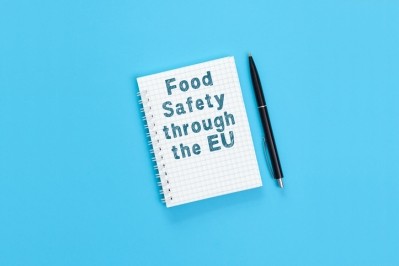Industry flags challenges for ‘generic’ feed additives linked to limits of EU regulation

“The costs involved in gaining EU market access for individual players are high and quite often with those generic products, the returns are insufficient,” said Reinder Sijtsma, government relations and regulatory affairs director, Nutreco.
He was talking about the challenges for the feed sector linked to ongoing revisions in EU feed legislation during the Akademie Fresenius feed event, being run online over two days, 27-28 October.
The tightening supply of ‘generic’ feed additives in the EU was already observed under the feed additive reauthorization process, he said. Industry is fearful that as the REFIT process pertaining to EU feed additive legislation starts to be fully implemented, the trend will accelerate.
“On top of the costs involved, many generic feed additive manufacturers say the EU feed additive legislation process is quite unpredictable and that it can take a long time; moreover, with those generic feed additives you cannot get exclusivity,” said the regulatory affairs expert.
Those concerns apply to technological, sensory and nutritional additives, there is not an issue for zootechnical, coccidiostats or strain specific additives, which can be awarded holder specific feed additive authorizations.
A post from Pen & Tec Consulting, published in September 2019, would support Sijtsma’s statements:
“All authorizations for nutritional, technological and sensory feed additive are generic, meaning once one of these products are approved, any other company can sell the same product as long as they meet the specification outlined in the authorization. We believe that this disincentivizes companies to invest in new and novel products that fall within these ‘generic’ feed additive categories because of the financial burden of generating data and then getting no market protection once authorized.
“It particularly affects small and medium businesses (SMEs), who are usually the ones with innovative ideas and would need the EC to protect their investment. Establishing a favorable regulatory environment for innovative products is especially important in today’s food chain where priority should be given to finding alternatives to antibiotics and novel sources of sustainable protein.”
Sijtsma also flagged the cost implications of EU feed legislative changes, outlining the typical compliance outlay for a standard premix plant in the EU arising out of the feed additive reauthorization process. A standard facility would be forced to pay out somewhere in the region of €200K to €400k per year, arising from the necessary reformulation, labelling amendments and the customer communication pertaining to such regulatory conformity, he said.
New functional group
The feed industry also believes that EU feed regulation is lagging behind scientific and technological developments, further restricting innovation, said Sijtsma.
The definition of animal nutrition in EU feed legislation requires broadening beyond providing growth and maintenance, he said. It should take into account that nutrition can have an impact on farmed animals' resilience to stressors, he said.
“Of course we are happy with the new functional group – physiological condition stabilizers – established in June 2019 under in Regulation (EC) 1831/2003, but what is still lacking, in that respect, is clear guidance on how to file authorization dossiers in this category, particularly in relation to measuring endpoints – that still needs to be sorted out.”
Another development, he said, that shores up the argument that the EU is hostile to feed innovation is that of the 35,000 feed related patents filed globally in 2019, only 20% would adhere to EU feed regulation.
“Some researchers even say that estimate is too high, that it is closer to 5%.”
China is taking the lead in such animal feed related patent filing, he said.
“And, interestingly, five years ago China was not even in the top 20 patent filing countries.”
Transparency regulation
Sijtsma also flagged industry concerns over the new EU transparency regulation, which is set to enter into force in March 2021. It will mean that a company’s ability to protect its intellectual property (IP) will be rather limited, with studies and communication with the European Food Safety Authority (EFSA) in the public domain, he stressed.
The EU zero tolerance policy related to fermentation feed products produced with genetically modified microorganisms was also raised as a constraint for the EU feed sector; Sijtsma noted the potential financial and reputational risks for EU feed players arising from this EU policy, given the challenges that exist around demonstrating the absence of the production microorganism in the final product.
But the EU Farm to Fork Strategy and the EU Green Deal do bring plenty of opportunity for the EU feed sector, with feed additives able to address multiple targets under those programs, he noted.















